Newsletter: Here’s how California plans to spend $37 billion fighting climate change
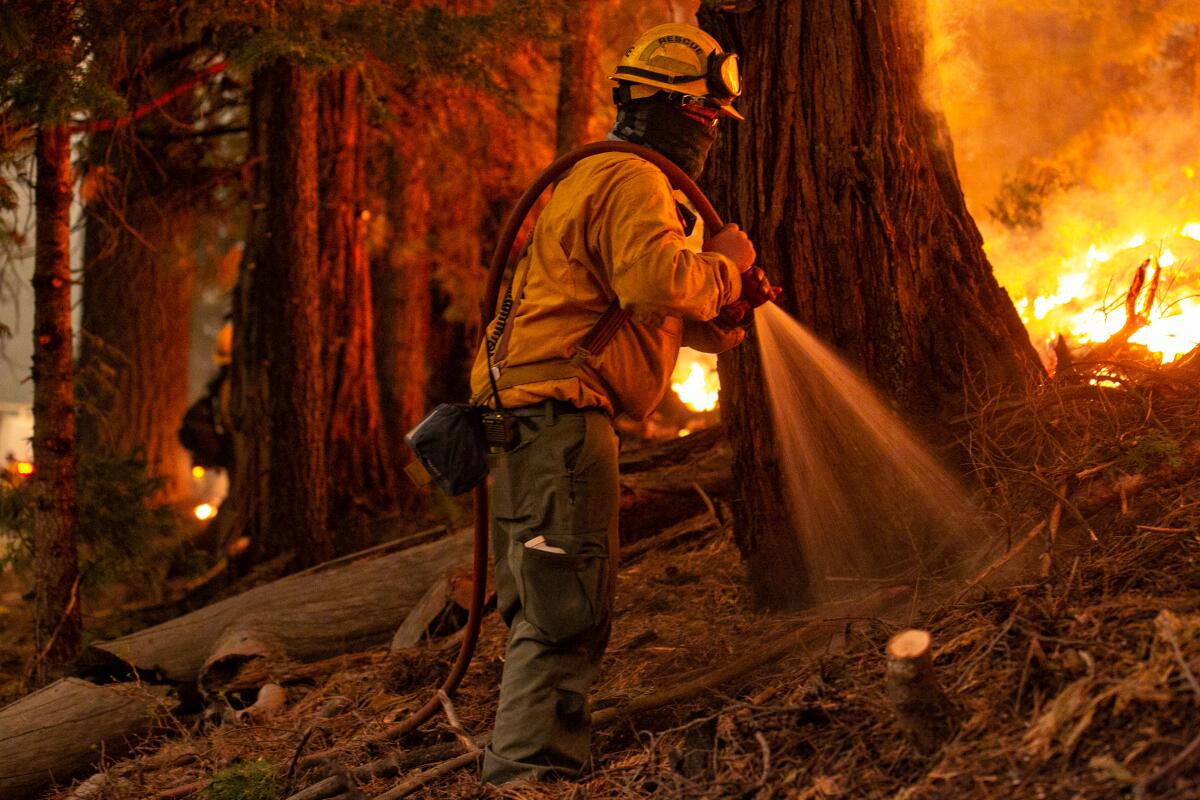
- Share via
This is the Jan. 13, 2022, edition of Boiling Point, a weekly newsletter about climate change and the environment in California and the American West. Sign up here to get it in your inbox.
When she first came to work in California during the Trump era, Lauren Sanchez says, the state’s climate budget was typically a few billion dollars a year, with much of that money automatically going to a couple of high-profile projects, including the bullet train through the Central Valley. That left climate policymakers and advocates fighting over a few hundred million dollars.
How times have changed. The latest budget proposal, unveiled this week by Gov. Gavin Newsom, includes $22 billion in new climate funding. It also allocates money from last year’s budget, for a total of $37 billion in climate spending over six years.
Sanchez, Newsom’s senior climate advisor, says it’s more than the large dollar figures that make this year’s budget different.
She told me the proposed funding is laser-focused on equity, which means supporting the low-income communities and people of color hit hardest by extreme heat, shrinking water supplies and more extreme wildfires. She said the budget also reflects an “all of society, all of government response” to the climate crisis, with investments in education, healthcare and affordable housing.
Global warming is usually associated with despair, not hope. But with the right strategies and investments, Sanchez said, California can create sustainable jobs, unleash clean energy innovation and protect the most vulnerable from rising temperatures.
“This is our greatest risk, but it’s also our greatest opportunity,” she said.
Some of the details will likely change over the next few months as the governor’s office negotiates with the Legislature, which must approve the budget. But here are nine things you should know about how Newsom would tackle the climate crisis.
1. Nothing more important than transportation
Cars, trucks and other vehicles are responsible for 40% of the state’s planet-warming pollution, and closer to half if you count emissions from oil refineries. So it makes sense that transportation makes up the biggest chunk of Newsom’s climate budget.
The governor proposed $6.1 billion in new funds to help Californians ditch gasoline, including $256 million in clean car rebates and other programs for low-income families, $900 million to build electric vehicle chargers in low-income neighborhoods and $419 million for “community-based transportation equity projects.” Those projects could include electric van pools for farmworkers, for instance, or infrastructure to support electric bikes or scooters — whatever local communities determine they most need.
“A lot of this is putting communities in the driver’s seat, pun intended,” Sanchez said.
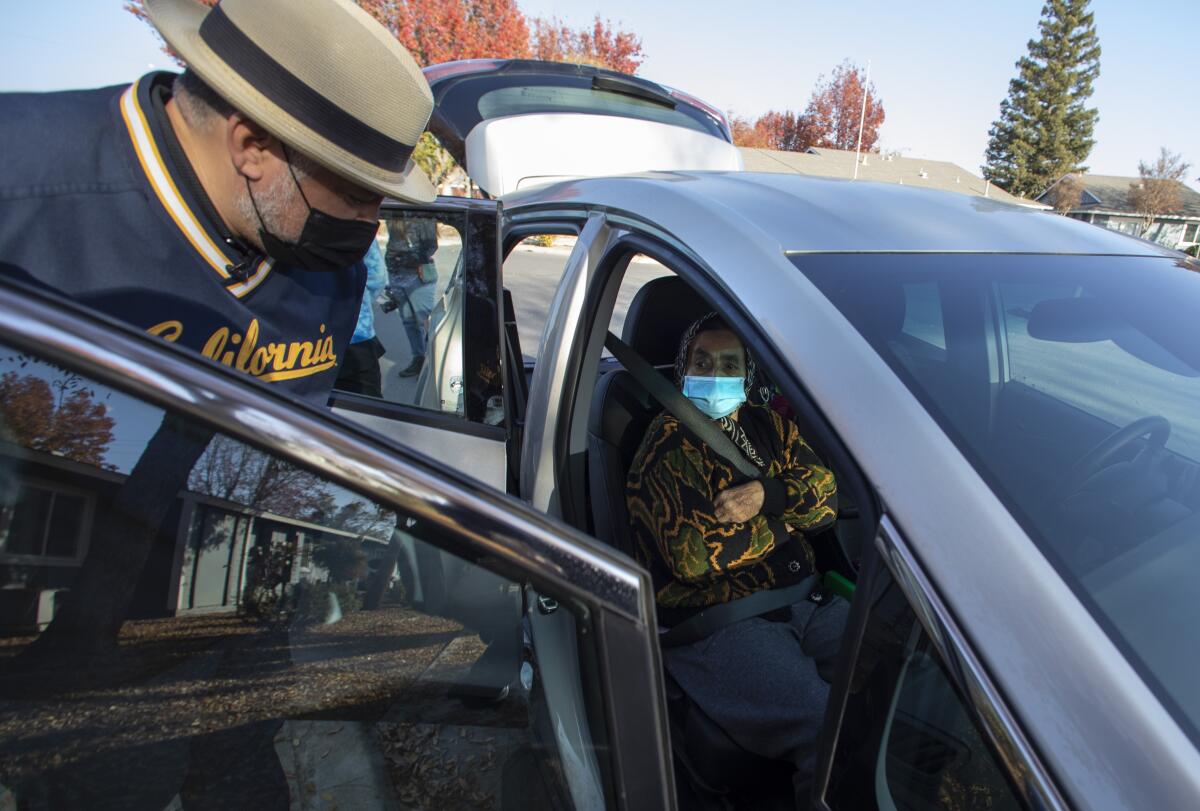
Public schools would get $1.5 billion for green transportation, which state officials estimate is enough to convert about one-third of the bus fleet to electric. Passenger rail is another big winner, with Newsom proposing $4.2 billion for high-speed rail — aka the bullet train — and $3.25 billion for other transit and train projects, with some of that money carved out for Southern California.
Half a billion dollars would go to “active transportation” projects that encourage walking and biking, along with $100 million for pedestrian and bicycle safety. Another $150 million would establish the Reconnecting Communities: Highways to Boulevards pilot program to convert underutilized highways into “multi-modal corridors” that could include walking paths and affordable housing — an effort to address the racist history of highway expansion that my colleague Liam Dillon has been writing about.
The Golden State is home to 30 million registered vehicles, about 1 million of which are electric. The governor’s office wants the next million to be driven by low- and moderate-income families, while also reducing the number of cars overall, Sanchez said.
“If we have 30 million electric vehicles on the road in 10 years, I think we will really have failed the planet,” she said. “Part of our mission here is to get Californians out of vehicles, and make sure they have access to affordable clean transit as well.”
2. Getting gas out of buildings
Gas furnaces, water heaters and stoves account for about 10% of the state’s climate pollution, with electricity use in buildings making up another 15% or so. Newsom wants to bring those numbers down by investing nearly $1 billion in retrofitting buildings with energy-efficient lighting, better insulation and electric appliances such as heat pumps and induction cooktops. Nearly two-thirds of the funding would be set aside for low-income homes, with $40 million carved out for cleaner refrigerants.
This would be one of California’s biggest steps yet to phase out natural gas heating and cooking, following the lead of dozens of cities that have banned or discouraged gas hookups in new buildings. It’s a campaign that faces gas industry pushback, but which supporters say is needed to confront the climate crisis and protect children from noxious fumes spewed by gas stoves.
Efficiency upgrades are a big deal too — especially with critics saying the Biden administration has moved far too slowly to repeal Trump-era rules allowing the sale of inefficient lightbulbs and other appliances, as the Washington Post’s Anna Phillips reports.
3. Cleaning up the electric grid
This is another big-ticket item, with $2 billion to advance technologies that can (hopefully) reduce carbon emissions while keeping the lights on 24/7, bulwarking the power grid against extreme weather and protecting utility ratepayers from higher costs.
One line item that definitely caught my attention: $380 million for long-duration energy storage, which can support solar and wind farms by supplying large amounts of backup power for longer periods of time than lithium-ion batteries. While it’s not clear which technologies the money would fund, I’ve written about two long-duration options known as “pumped storage” and “compressed air.” Incidentally, a compressed air startup with projects in California just got a $250-million investment from Goldman Sachs.
The budget also sets aside $240 million for a specific pumped storage project at Oroville Dam, in the Sierra Nevada foothills.
When state officials built the State Water Project in the 1960s, they gave themselves the ability to “store” energy by pumping water upstream to Oroville Dam when electricity supply exceeded demand, then releasing water back downstream — spinning electric turbines along the way — when demand exceeded supply. But the system hasn’t been used for about 15 years, since it interferes with the state’s ability to release enough cold water from Oroville into the Feather River, to help salmon and other fish survive.
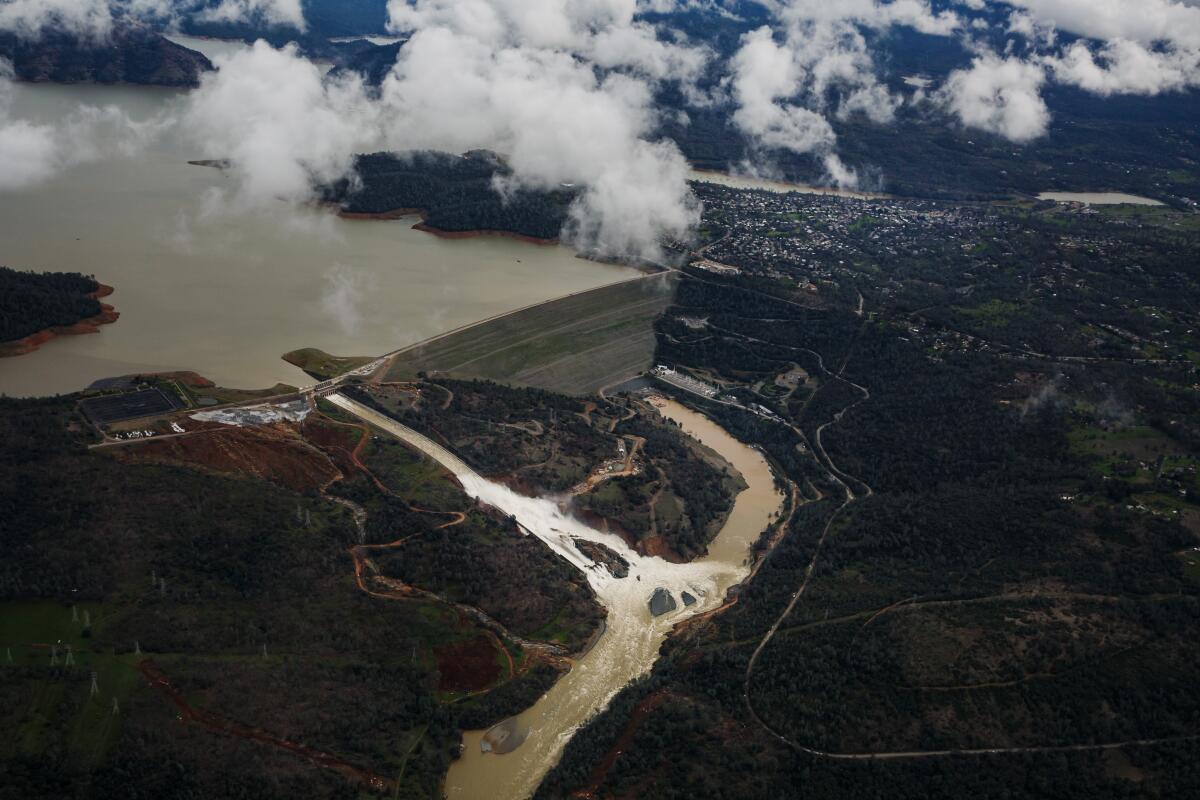
The $240 million would primarily fund a pipeline allowing easier access to cold water in the depths of Lake Oroville, according to Ted Craddock, a deputy director at the state Department of Water Resources. That should allow officials to run the 925-megawatt pumped storage project — which causes water to heat up — without losing the ability to release enough cold water for fish.
Other proposed investments include $100 million for green hydrogen, $45 million for offshore wind, $210 million to help industrial facilities clean up their act and $7 million for energy modeling — which sounds boring but is crucial for understanding how to keep the lights on as climate change messes with weather patterns and solar and wind power come to dominate the electric grid.
4. Not just traditional climate stuff
Sanchez was especially excited to talk about proposed investments that might not normally be considered part of a climate plan, but which she sees as critically important for helping Californians cope with — and work to prevent — rising temperatures.
One of those investments is $1 billion for new housing — and not just any housing, but “infill” housing within developed areas, rather than sprawling new subdivisions that create the need for long car trips. Newsom wants to spend $500 million building homes on “prime infill parcels in downtown-oriented areas.” Another $300 million would go to the Affordable Housing and Sustainable Communities program, which funds “land-use, housing, transportation and land preservation projects.”
That money wouldn’t solve the problem of single-family homeowners opposing new apartments, but it could certainly help.
“We know we need to build affordable housing near transit and jobs,” Sanchez said.
Climate health is another focus of the governor’s budget. It includes $350 million to train 25,000 new community health workers in areas such as climate change, homelessness and dementia, along with $25 million to help local health officials respond to climate-related risks. Those risks include extreme heat, wildfire smoke, pollution from diesel trucks and diseases such as valley fever.
Firefighters would be singled out for support, with $400 million set aside for their health and wellness. Sanchez said she’s seen how grueling the work can be, especially with climate change fueling year-round fire seasons. Suicide has become common.
“The mental toll on our firefighters is devastating,” Sanchez said.
5. More details to come on extreme heat, 30 by 30
Alongside the budget, the Newsom administration released a draft extreme heat action plan, following an L.A. Times investigation that found California has done a remarkably poor job tracking the number of people dying in heat waves and providing resources to help the most vulnerable stay safe as the planet heats up . My colleague Cindy Carcamo reports that the state’s draft plan recommends steps to monitor heat wave deaths and the possible establishment of temperature limits for residential units.
The budget proposal doesn’t include new funding for extreme heat initiatives, although it does detail how $175 million from last year’s budget will be spent, including planting trees in hot urban neighborhoods and installing air conditioning in low-income homes, among other programs. The governor’s office says it will spell out plans for an additional $300 million in funding from last year’s budget over the next few months, after the public has a chance to offer feedback on the draft extreme heat plan.
Portions of that $300 million could go toward “cooling schools in heat-vulnerable communities, protecting vulnerable populations through increased enforcement, building a climate-smart workforce through training partnerships and increasing public awareness of the risks from extreme heat,” Newsom’s natural resources secretary, Wade Crowfoot, said in a media call.
Also waiting on more details: Newsom’s 30 by 30 commitment to protect 30% of California’s lands and coastal waters by 2030. Last year’s budget included $768 million to carry out that plan and fund related initiatives. But rather than spelling out how the money will be used, the governor’s office says it’s waiting to get public feedback on a draft 30 by 30 plan released last month.
6. A unique approach to Lithium Valley
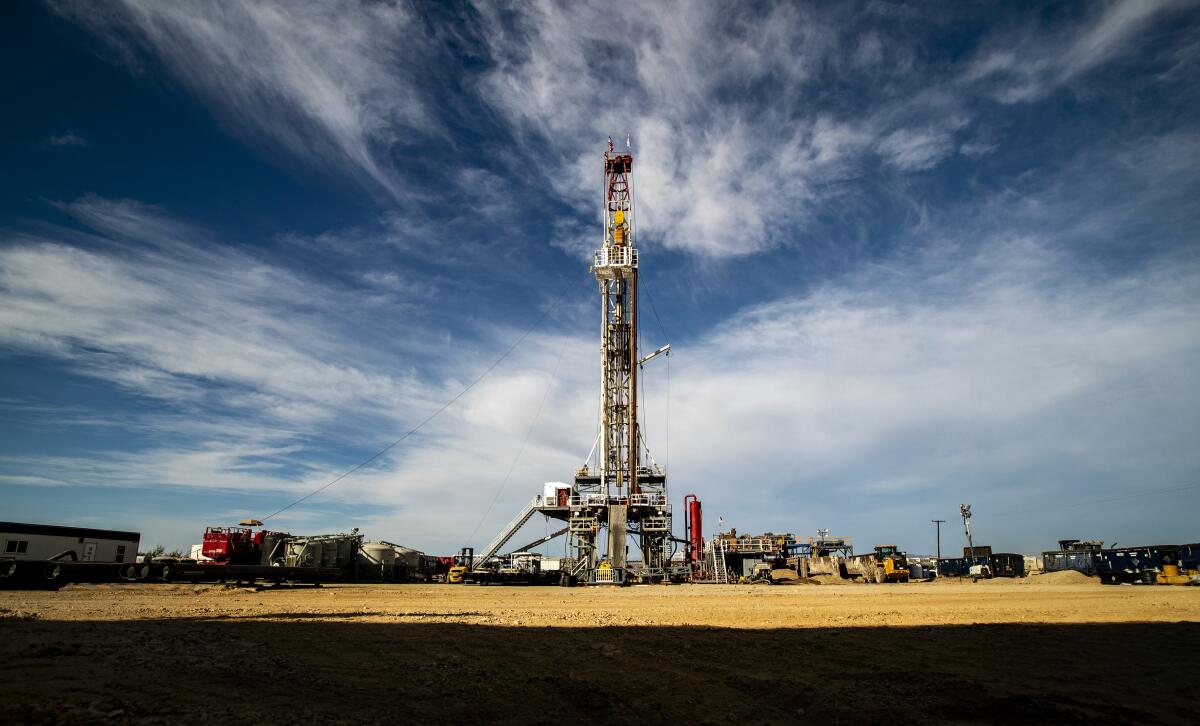
If you’ve been reading this newsletter for a while, you know one of my favorite stories is lithium extraction and geothermal energy in the Imperial Valley, at the southern end of the Salton Sea. The super-heated geothermal reservoir thousands of feet beneath the salty lake could produce loads of lithium for electric vehicle batteries, along with round-the-clock climate-friendly power.
Newsom’s budget doesn’t propose funding the companies looking to tap that reservoir, but it does dangle a promise that might be even more valuable — faster and simpler environmental permitting. In exchange for that regulatory support, the companies would need to agree to some kind of revenue sharing, to make sure the people of the Imperial Valley — a low-income, largely Latino region dominated by the agriculture industry — actually benefit from the new economic development.
That kind of arrangement would need to be worked out in the Legislature. At least one lithium developer, Controlled Thermal Resources, is already on board, with Chief Executive Rod Colwell saying the company applauds the governor’s proposal.
“We have what some have described as the Saudi Arabia of lithium,” Newsom said at a news conference.
7. Maybe Tesla will come back
Another goal of Newsom’s budget is prodding companies working on climate to locate in California, and thus pay taxes here.
Companies headquartered in the state would get a $250-million tax credit. Another $100-million tax credit would support firms developing clean energy technologies, with the state securing a right to some of their profits if they end up making money.
Newsom alluded to Tesla’s recent decision to move its headquarters to Texas from Palo Alto, CNBC’s Lora Kolodny reported.
“Even those that resided historically in the state are growing in the state,” he said at the news conference.
Other budget provisions could create new jobs plugging abandoned oil and gas wells — a big source of pollution in Los Angeles and statewide. In addition to $200 million for well plugging, Newsom proposed $15 million for a pilot program to train displaced oil and gas workers for those jobs, and a $50-million pilot fund to support displaced fossil fuel workers more broadly.
8. Don’t worry, I didn’t forget fire and drought
Last year’s budget included $1.5 billion to fight wildfires. This year’s adds $1.2 billion, much of it for forest thinning, prescribed burns and other projects to reduce fire risks. It also adds $750 million to last year’s $5.2 billion for drought response, including $180 million for water suppliers to plug leaks, tear out grass and improve efficiency; $145 million in emergency assistance for communities at risk of going dry; $75 million to protect fish and wildlife; and $30 million for replenishing groundwater.
One other item that caught my attention: $40 million “to repurpose irrigated agricultural land to reduce reliance on groundwater while providing community health, economic well-being, water supply, habitat, renewable energy, and climate benefits.”
While the details aren’t spelled out in the budget documents, I’m guessing some of that money could be used for converting farmland to solar fields as the San Joaquin Valley is forced to cut back on groundwater pumping, a topic I wrote about last year.
9. Nothing about rooftop solar

Newsom’s budget proposal doesn’t say anything about rooftop solar — a sore spot for solar companies and activists pushing the governor to lean on his appointees at the California Public Utilities Commission to maintain robust rooftop solar incentives.
But asked at his news conference about a commission proposal to slash incentives, Newsom offered his first public comments on the issue, saying, “That draft plan was recently released. I just had a chance to review and I’ll say this about the plan: We still have some work to do.” Pressed for more details later, he added, “Do I think that changes need to be made? Yes, I do.”
So that’s the budget!
And now, here’s what else is happening around the West:
TOP STORIES
The contiguous United States just saw its hottest December and fourth-warmest year on record. If that’s not bad enough, 688 people died in 20 different billion-dollar weather and climate disasters in the U.S. in 2021 — and oh yeah, the nation’s carbon emissions rose 6%, Seth Borenstein reports for the Associated Press. The planet’s seven hottest years have been the last seven, Axios’ Andrew Freedman notes. We can expect 2022 to be worse — but there’s still reason for hope, as I wrote last month.
Huron, a city in California’s San Joaquin Valley, has never had much public transit. So Mayor Rey León took matters into his own hands, building a free electric vehicle ride-share program called Green Raiteros to support farmworkers and their families — without adding to the air pollution that plagues the region. It could be a model for the nation as the Biden administration looks to get cleaner transportation options into disadvantaged communities, my colleague Evan Halper writes. I’m especially encouraged to see these kinds of solutions in places like the San Joaquin Valley that will bear the brunt of climate change, with The Times’ Louis Sahagún reporting that the region could see its average annual temperature increase 4 degrees Fahrenheit by midcentury.
A judge blocked construction of a resort development in Northern California’s Lake County, saying the sole evacuation route — a two-lane highway through a steep canyon — could be overwhelmed during the next fire. That scenario could lead to a high death toll like the one in Paradise, where the Camp fire overtook residents stuck in their cars as they tried to get out of town, my colleague Alex Wigglesworth reports. Speaking of the Camp fire, Pacific Gas & Electric — which sparked that blaze — will see its criminal probation stemming from the 2010 San Bruno gas pipeline explosion come to an end this month, with the federal government declining to ask a judge to extend the probation despite the fires PG&E has ignited, per Nicholas Iovino at Courthouse News Service. Meanwhile, new research finds that as the West is hit by more frequent and intense fires and heat, there are more days when we’re breathing dangerous soot particles and ozone at the same time, Henry Fountain reports for the New York Times.
WATER IN THE WEST

Long-awaited cuts to Colorado River water are finally hitting Arizona farmers. In Pinal County, farmers expect to fallow 30% to 40% of the acreage they would typically plant, Brandon Loomis reports for the Arizona Republic. Recent snowpack has improved the near-term outlook, with the Colorado and its tributaries now forecast to pour 99% of normal flow into Lake Powell by April — but that’s 99% of a new “normal” diminished by climate change, Brandon writes. And in one last story out of Arizona, Gov. Doug Ducey wants to spend $1 billion on water projects — with much of the money going to desalination. Here’s Brandon again.
In yet another sign of worrying conditions on the Colorado, the U.S. Bureau of Reclamation says it will hold back 350,000 acre-feet of water in Lake Powell behind Glen Canyon Dam to prevent the reservoir from losing its ability to generate hydropower as early as next month. Details here from Brian Maffly at the Salt Lake Tribune. Maybe it’s time to give up on Glen Canyon Dam? Some environmentalists have been making the case to drain Lake Powell for years, as highlighted in this story by NPR’s Nathan Rott exploring the long-lost canyons and natural bridges that are re-emerging as the artificial reservoir shrinks.
Should California adopt a Republican proposal to spend taxpayer funds on a new reservoir and other water projects? L.A. Times columnist George Skelton says it’s an idea worth considering as water shortages become an ever-more-dire concern. And lest anyone get complacent after recent rains, Paul Duginski has a rundown of charts showing why the drought isn’t over.
POLITICAL CLIMATE
Two hundred eight-nine people were killed in car collisions in Los Angeles last year, including 128 pedestrians — up 21% from 2020. Safe streets advocates say Mayor Eric Garcetti — who won’t be mayor much longer — must devote more funding to his Vision Zero initiative to end traffic deaths, Dakota Smith reports for The Times. Consider this a reminder that cars do a lot of harm beyond fueling climate change. For L.A.-area residents who take public transit, you’ll have to pay to get on a Metro bus starting this week, for the first time since fares were suspended in March 2020. But discounts are available, Madalyn Amato reports.
Nuclear supporters held a rally near California’s Diablo Canyon power plant, calling on officials to save the facility to fight climate change. Grist’s Nathanael Johnson attended the rally, which offered an interesting window into the growing movement among some climate advocates to keep nuclear reactors from shutting down. L.A. Times columnist Michael Hiltzik is skeptical; he writes that “the history of nuclear power in America is one of rushed and slipshod engineering, unwarranted assurances of public safety, political influence and financial chicanery, inept and duplicitous regulators, and mismanagement on a grand scale.”
The five national forests with the highest number of expired water diversion permits are all in California. That’s according to this investigation by the Desert Sun’s Erin Rode. Companies draw huge amounts of water based on those expired permits.
AROUND THE WEST
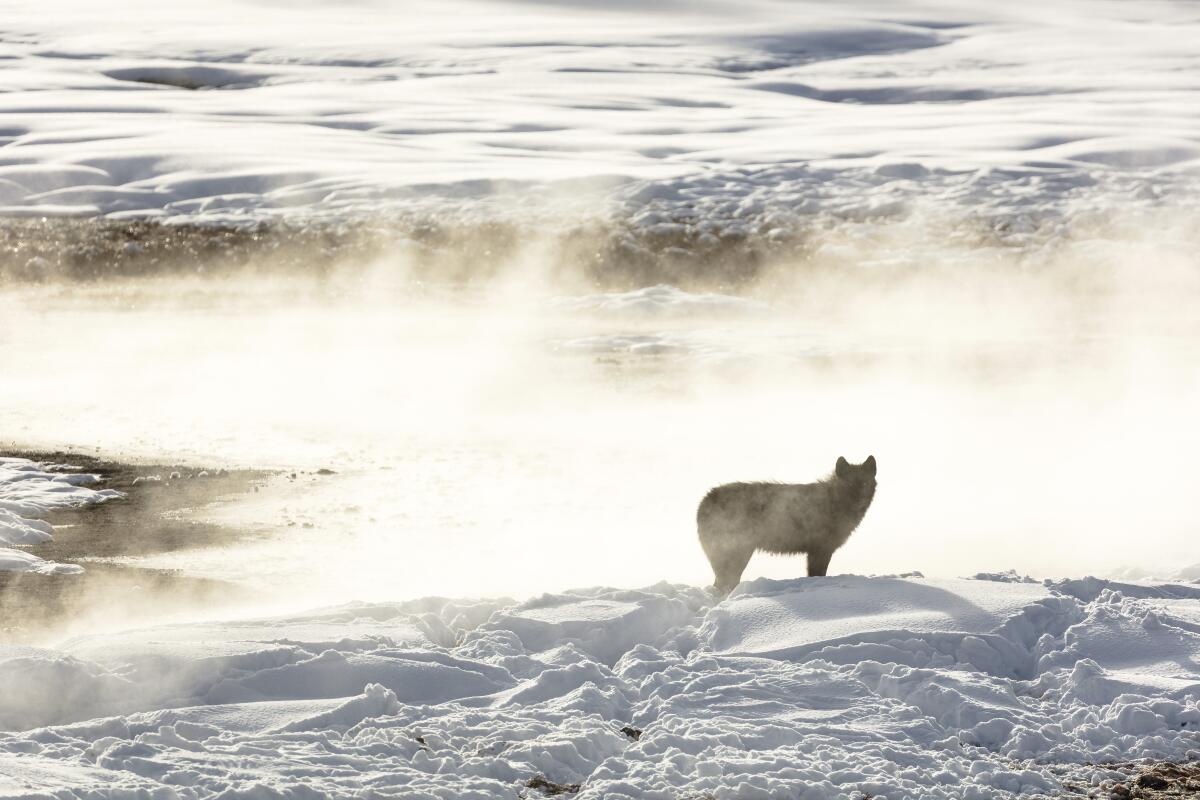
An entire Yellowstone wolf pack is now “eliminated” after hunters killed 20 gray wolves that strayed from the national park into unprotected lands in Montana in recent months. Montana Gov. Greg Gianforte — who received a warning from state wildlife officials last year after killing a wolf without taking a required education course — wouldn’t grant a National Park Service request to shut down hunting for the rest of the season, the AP’s Matthew Brown reports. In better wildlife news, monarch butterfly numbers were up along the West Coast last year after 2020’s devastating lows, Michael Doyle reports for E&E News.
I’ve never been to Shoshone, Calif., but I really want to go there after reading a fascinating New Yorker piece about the tiny Mojave Desert town. Alex Ross profiled Susan Sorrells, who runs Shoshone and whose grandfather helped establish the town; she’s working with scientists trying to save the Amargosa vole and local pupfish, and she wants to create Amargosa Basin National Monument. I’m also intrigued by Madrid, N.M., where local residents want to keep large coal piles sitting on hillsides overlooking the town because local mining history is a big tourist draw, as Elizabeth Miller writes for the Washington Post.
A landmark arch along the Central California coast is gone following recent rains. The arch at Spooner’s Cove, near Montaña de Oro State Park in San Luis Obispo County, collapsed during December’s deluge, my colleague Hayley Smith writes. As one state parks ranger told Hayley, time, rain and wind all take a toll, and “the same force that creates the arch eventually destroys it.”
ONE MORE THING
I’ve read a lot of surprising stories about opposition to renewable energy projects. But this one might take the cake: Organizers of Burning Man — yes, the counterculture/art festival in Nevada’s Black Rock Desert — are fighting a geothermal power plant on public lands. They say it would threaten the area’s dark skies and tranquility, Jenny Kane reports for the Reno Gazette Journal.
Burning Man has acknowledged it has a huge carbon footprint, with attendees flying in from all over the world and many of them bringing diesel generators. My Twitter followers were not pleased to learn about the opposition to the geothermal plant.
We’ll be back in your inbox next week. If you enjoyed this newsletter, please consider forwarding it to your friends and colleagues.






